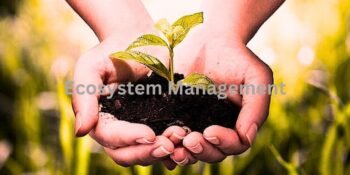Biomass has emerged as a versatile and environmentally friendly option in the pursuit of sustainable and renewable energy sources. This article delves into the historical roots of biomass utilization, its diverse forms, its role in energy production, and its promising future in contributing to a more sustainable and resilient energy landscape.
Historical Roots of Biomass Utilization
Biomass as an energy source has ancient roots, dating back to when humans first discovered fire and utilized wood for heating and cooking. Throughout history, biomass in various forms has been a vital source of energy for communities, powering everything from cooking stoves to early industrial processes.
Traditional Biomass Uses
Historically, biomass took the form of wood, crop residues, and animal dung, serving as the primary sources of heat and energy for human civilizations. This reliance on biomass continued through the centuries, shaping cultural practices and local economies.
Industrial Revolution and Beyond
The Industrial Revolution marked a shift towards coal and other fossil fuels, diminishing the reliance on traditional biomass sources. However, in the face of environmental challenges and the quest for sustainable energy, there has been a renewed interest in modernizing biomass utilization for contemporary energy needs.
Diverse Forms of Biomass
Biomass is a broad term encompassing a variety of organic materials derived from plants and animals. Understanding the diverse forms of biomass is essential for appreciating its potential as a renewable energy source.
Wood and Agricultural Residues
Wood, a traditional biomass source, remains relevant in modern energy systems. Additionally, agricultural residues, such as crop stalks, straw, and husks, are valuable biomass materials that can be used for energy production, providing a sustainable alternative to burning or disposal.
Bioenergy Crops
Dedicated bioenergy crops, like switchgrass and miscanthus, are cultivated specifically for energy production. These high-yield, low-input crops offer a renewable and environmentally friendly source of biomass, contributing to sustainable energy solutions.
Organic Waste
Organic waste, including food scraps, yard trimmings, and animal manure, can be converted into biomass energy through anaerobic digestion or composting. It not only diverts waste from landfills but also generates renewable energy.
Algae and Aquatic Biomass
Algae and aquatic plants can be cultivated to produce biomass for energy. These organisms have high growth rates and can be harvested to produce biofuels, biogas, and other forms of renewable energy.
Biomass in Energy Production
Biomass can be converted into different forms of energy, making it a versatile and sustainable option for power generation, heat production, and transportation fuels.
Bioenergy Production Pathways
Biomass can undergo different conversion processes to produce bioenergy. Direct combustion, gasification, pyrolysis, and fermentation are some pathways that transform biomass into biofuels, biogas, heat, and electricity.
Biofuels and Transportation
Biomass-derived biofuels, such as ethanol and biodiesel, provide renewable alternatives to traditional fossil fuels for transportation. These fuels can be used in existing vehicle engines, decreasing greenhouse gas emissions and dependence on finite fossil fuel resources.
Biomass for Heat and Electricity
Direct biomass combustion, often in the form of pellets or wood chips, can generate heat for residential, industrial, and institutional purposes. Biomass power plants convert organic materials into electricity, creating a more sustainable energy mix.
Biogas from Anaerobic Digestion
Anaerobic digestion of organic waste, including biomass, produces biogas, which is mainly methane. This biogas can be used for heating, electricity generation, or as a renewable fuel for vehicles.
Promising Future of Biomass
As the global community strives for a more sustainable and low-carbon energy future, biomass holds promise as a renewable resource with several environmental and economic benefits.
Carbon Neutrality and Reduced Emissions
Biomass is considered a carbon-neutral energy origin because the carbon dioxide discharged during combustion is offset by the carbon dioxide soaked during plant growth. This feature makes biomass essential in mitigating greenhouse gas emissions and fighting climate change.
Sustainable Land Use and Rural Development
Culturing bioenergy crops and sustainable biomass practices promote rural development and contribute to a more diversified and resilient agricultural sector. Biomass production can provide economic opportunities for farmers while ensuring sustainable land use practices.
Integration with Renewable Technologies
Biomass can complement renewable energy technologies, such as wind and solar, by providing a stable and dispatchable energy source. Biomass power plants can operate continuously, helping to address the intermittency associated with some renewable sources.
Advancements in Biomass Conversion Technologies
Ongoing research and development in biomass conversion technologies aim to enhance efficiency, reduce costs, and expand the range of biomass applications. Innovations in biochemical and thermochemical processes contribute to unlocking biomass’s full potential as a renewable energy source.
Conclusion
Biomass, deeply rooted in human history, is experiencing a resurgence as a crucial player in the quest for sustainable and renewable energy. From traditional uses to modern bioenergy production, biomass offers a versatile and eco-friendly solution to our energy needs. As technology and sustainable practices continue to evolve, biomass is poised to play a pivotal role in shaping a cleaner, greener, and more resilient energy landscape for future generations.











